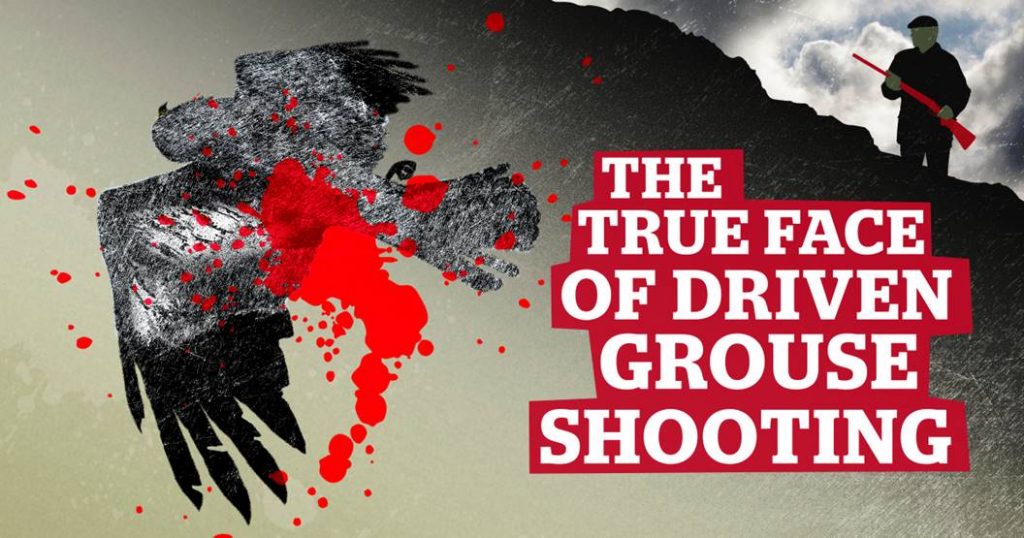
We are going to have to wait a little while or a long while to see the results and findings of the long-awaited analysis of the Hen Harrier satellite-tagging study that you and I (as taxpayers) have funded for many years. However, it already looks as though the findings could be the dynamite to blow driven grouse shooting out of the water.
This post aims to comment generally on what we know so far and what we might expect to find out eventually.
- satellite-tagging of Hen Harriers in this study started in 2007 after radio-tags were shown not to be up to the job in these hilly upland areas
- Hen Harriers were tagged as nestlings.
- of 59 Hen Harriers tagged in this study, 18 were tagged across the Scottish border at Langholm, 17 were tagged in the Bowland area (mostly Lancashire), 13 were tagged in Cumbria (I’m guessing in the Cumbrian end of the Yorkshire Dales NP – silly me, they’ll mostly be from Geltsdale of course ), 5 in Northumberland, 5 in the Isle of Man and a single bird in the Peak District.
- the RSPB satellite-tagged Hen Harriers are not included in this data release nor, as I understand it, in the analysis whose results will be published eventually.
- the data released, and those included in the analysis, include those birds tagged up to and including 2017 and their fate up to September 2017. We know for example that one of the six birds listed as alive in the data update, John, has subsequently disappeared in an area of driven grouse shooting in Yorkshire. Six more were known to have died of natural causes, another’s tag failed and was known to live for several years, three were known to have died of illegal persecution and the remaining 43 have known final locations (now released) but the bodies were not recovered and therefore their cause of death is not known. The detailed locations for three birds’ last fixes are withheld: this may be, I don’t know (but I like to think the best of people wherever possible) because one of them might disclose a still-used winter roost (the ‘Sheffield’ bird, just guessing), and the other two (both from Bowland) might disclose nest locations.
- If we use this rather useful site then we can put in the grid reference and immediately be taken to a satellite image of the area. So let’s look at the areas in which six Hen Harriers died of natural causes and 3 died of persecution (or at least their last good satellite fixes);
First, Bowland Beth in Nidderdale:
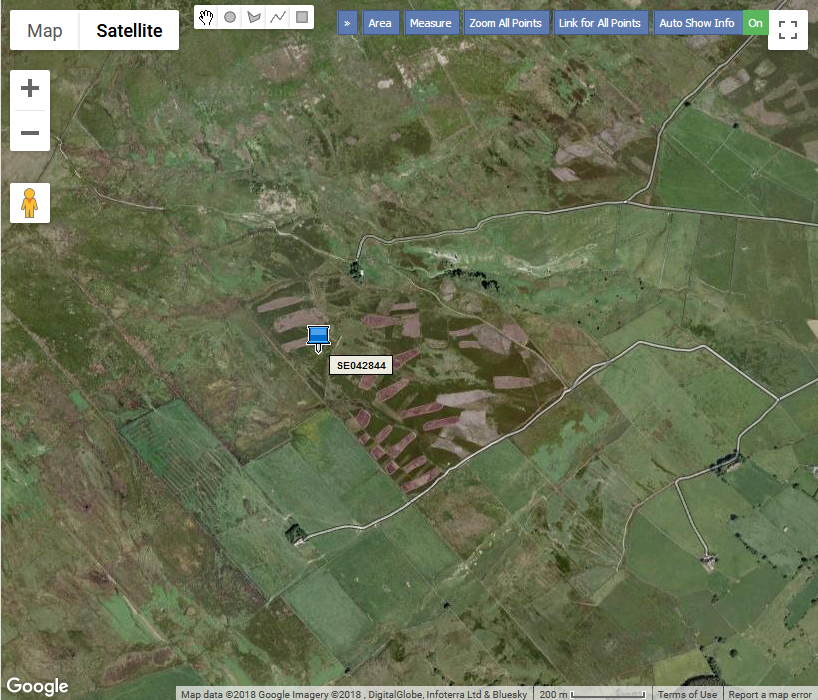
Rowan in Cumbria:
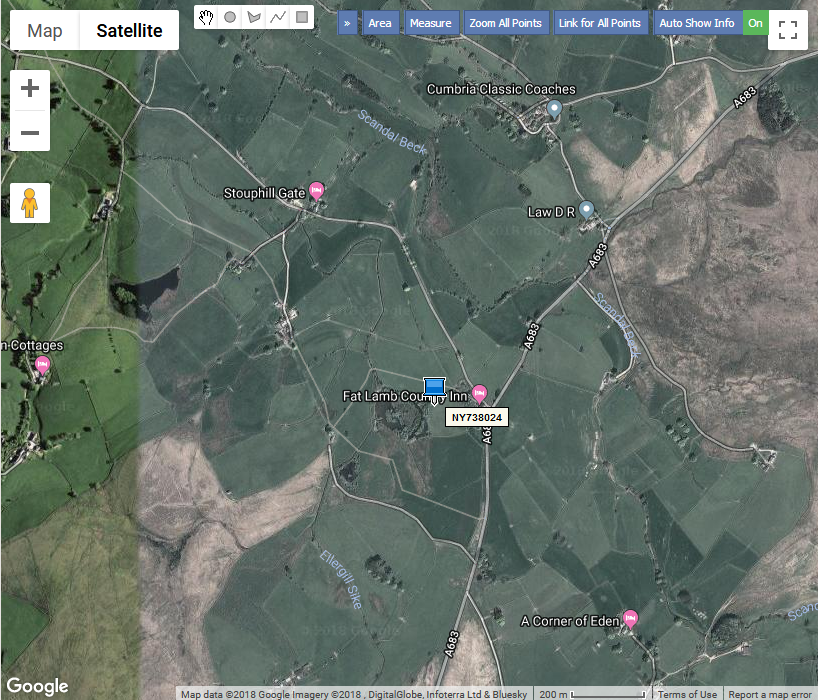
Annie in Dumfries and Galloway:

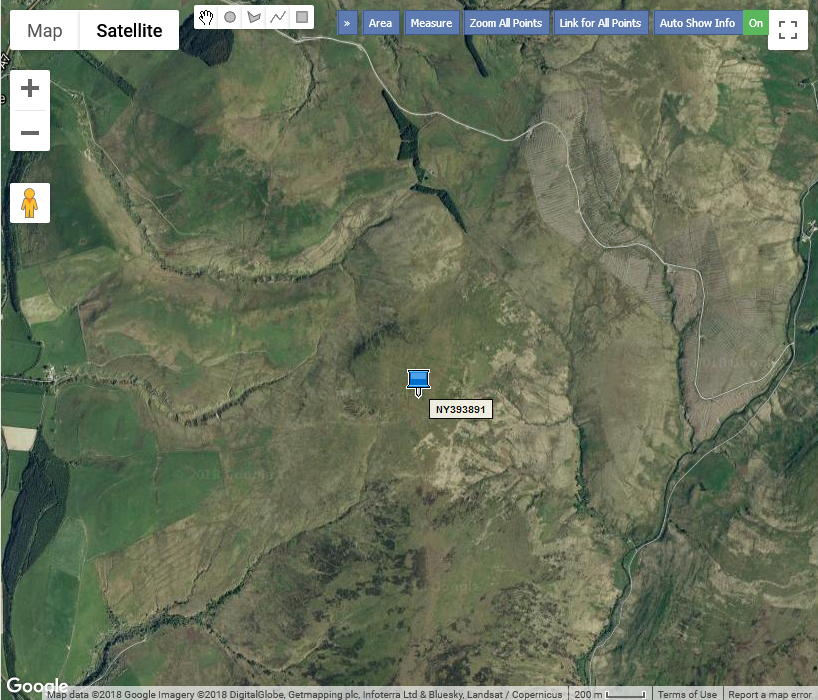
Blae in Lothian and Borders:
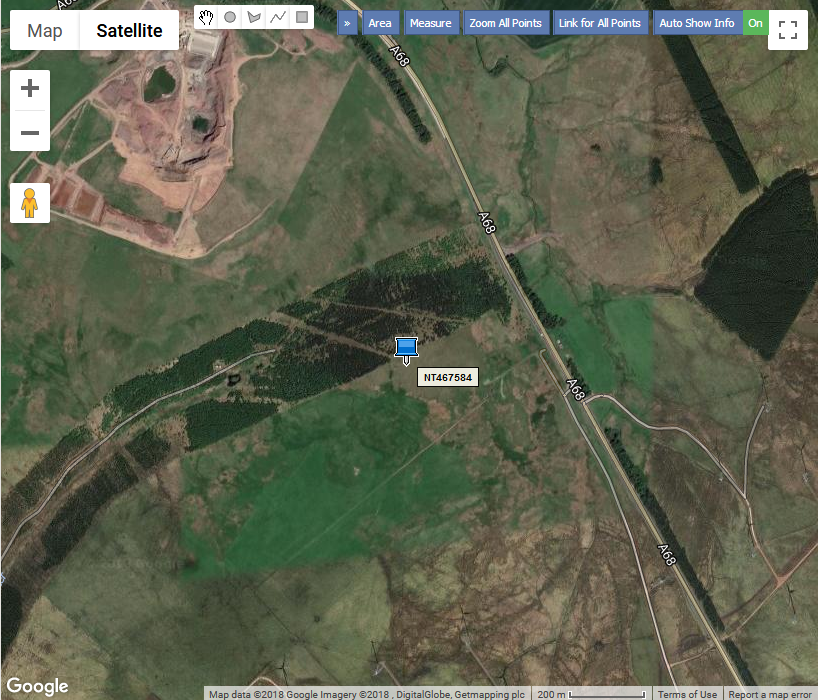
Joanne in Cumbria:
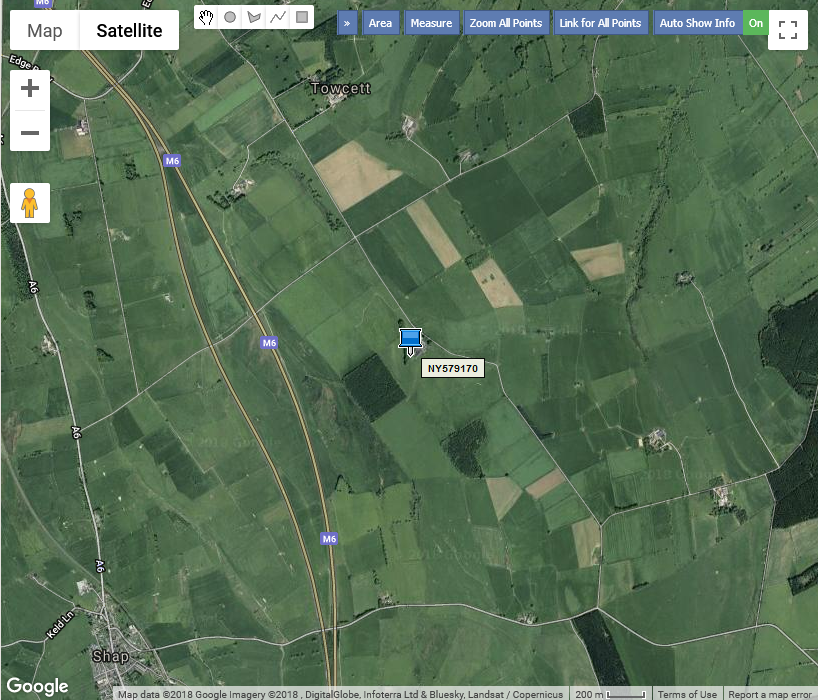
Na Talie in Peak District: wrong grid reference in table – the one given is same as Joanne’s above. But I imagine it is actually close to a grouse moor – pity I can’t show you.
Cyan near Lockerbie:
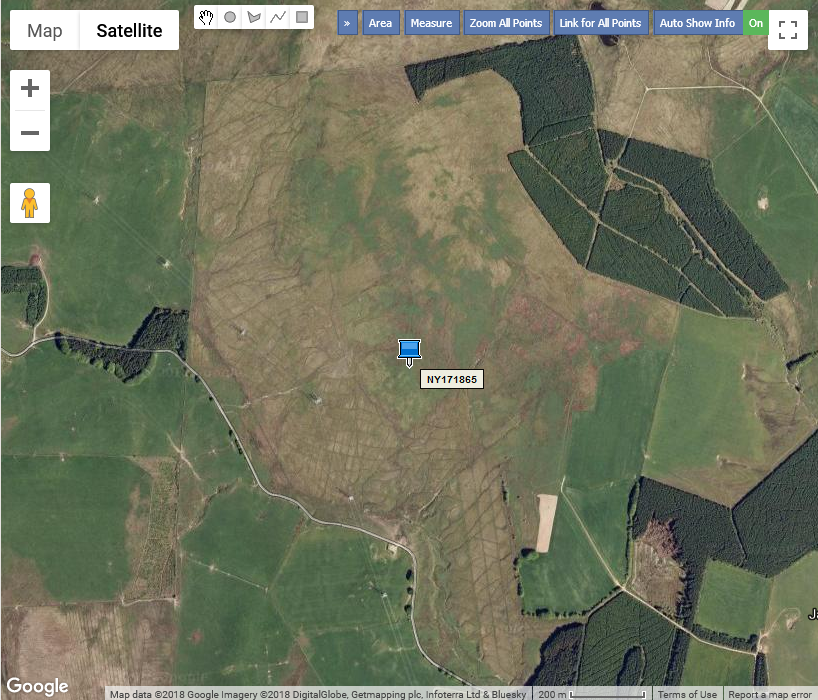
Unnamed, tag 94588 in Dorset:
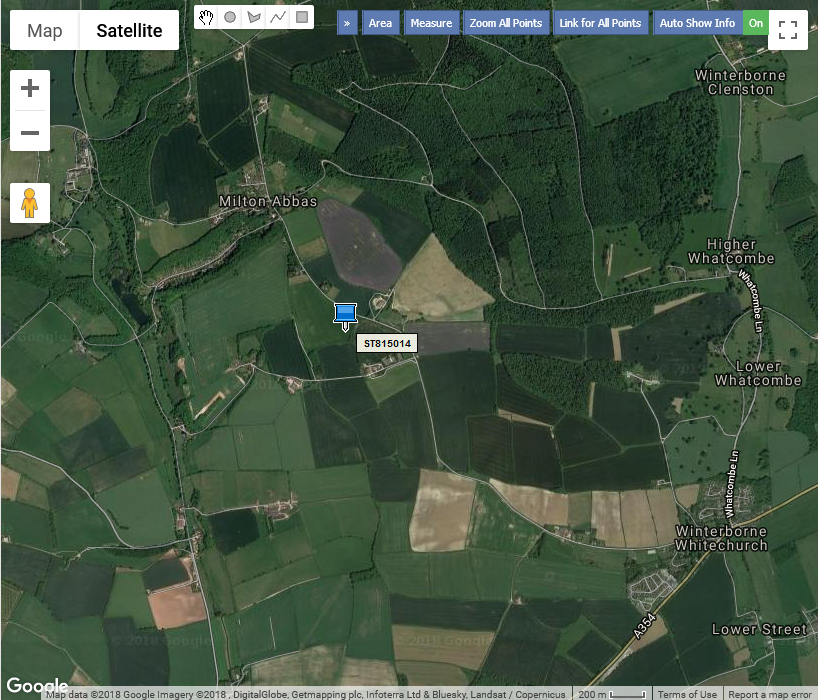
Unnamed, tag 94952 in Dumfries and Galloway:
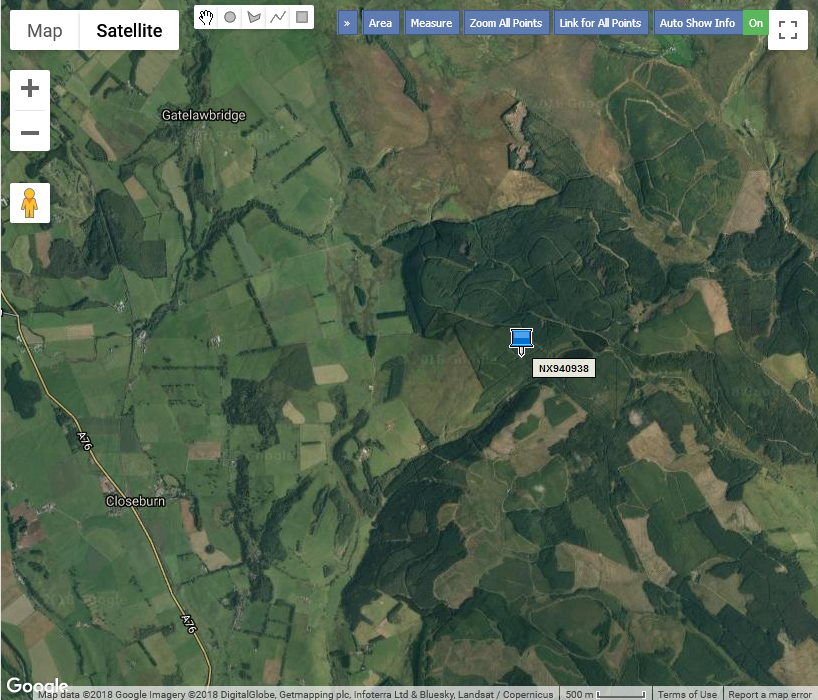
So what do you take from those nine examples (eight really because of the error in grid reference for the Peak District bird)? I think the answer has to be ‘Not much really, or at least not for sure’. We know that Bowland Beth was recovered on a grouse moor, in an area with lots of grouse moors and had been shot and that is what the last good fix shows too. Also, Annie was found near a grouse moor and Rowan was close to one too. So all three of the bodies of the ‘confirmed’ persecution deaths were picked up on or quite near grouse moors. That seems indicative but it does depend a little on what you call ‘near’.
There is much less sign of nearby grouse moors in the areas near the last good fixes of five of the six bodies that died from natural causes including the Dorset bird (no grouse moors in Dorset), Joanne in Cumbria (lots of farmland but not a million miles from Shap), the other unnamed bird from Dumfries and Galloway (lots of forestry not much sign of grouse moors very close), Cyan near Lockerbie (lots of forestry) and probably Blae in Lothian and Borders where it is a forestry area with some grouse moors to the east. That leaves NaTalie in the Peak District where I suspect that the locality did have plenty of grouse shooting but the wrong grid reference is given.
There looks to be more grouse shooting land near where the three persecuted birds were last recorded by satellite fix than where the six ‘natural causes’ birds were last recorded – but that’s based on a quick eyeballing of the satellite maps and spotting the characteristic patterns of burned heather on grouse moors and with little local knowledge of the areas, and it’s only nine birds. It would have to be better evidence than that to stand up in the court of public opinion.
The first thing that could be done would be to take all the other ‘missing in action’ Hen Harriers and assume they are all dead and died near where their last good fixes were. That would be worth doing. You can do it with the data that NE has made available if you like. If you start though, you’ll find a few difficulties along the way so you might want to look at the data and then wait to see what the boffins have come up with – maybe if we had been in Vancouver yesterday we would already know.

Hen Harriers will die of natural causes (on and off grouse moors) and they will die of persecution (on and off grouse moors). What we really need to know to make progress is, is it more likely (and a bit more, or a lot more?) that Hen Harriers die on grouse moors than you would expect and is it less likely that they die away from grouse moors than you would expect? Do Hen Harriers face much greater risk of death on grouse moors than away from them? And you can’t easily tell that from the final locations of the birds, but you can get to grips with that information from their history of locations before they cease to transmit. And you can use the final fixes of that large number of birds ‘missing in action’ as proxies for dead birds.
If, just to make the point, all Hen Harriers spend half their time at the seaside and half their time in the hills (they don’t) then we might expect to see about half of the Hen Harrier disappearances on the coasts and half up hills.
I am hoping that the analysis which we will eventually see will take account of where Hen Harriers spend their time when alive to calculate the chances that so many of them went missing in action, presumed mostly dead, in grouse shooting areas. I’m not exactly sure how I would do that analysis but I have a few ideas, all of which would take an awful lot of work and number-crunching.
There is one feature of the data that we already know, and of which we should not lose sight: satellite-tagged Hen Harriers don’t live very long. The vast majority of these birds died before their first July and Hen Harriers would normally first nest as one-year-olds or two-year-olds – very few of these birds got that far (unless you believe that there was mass tag-failure and they actually flew around for years after they ceased transmitting without anyone noticing). Therefore it is easy to see why the English population is not growing consistently over time – not enough birds survive to breeding age.
Note to Natural England – there are two three four five six apparent errors in the grid references that you have provided:
- NaTalie has a last fix grid reference in Cumbria (the same as Joanne’s) whereas it is supposed to be in the Peak District. Could you correct that please?
- #90691 which is listed as having a last fix in the N York Moors actually has a grid reference for Bowland (perhaps that was the birthplace?) – could you correct that please? Maybe it is SE612944 instead of SD612494?
- #73591 which is listed as having a last fix in Bowland actually has a grid reference in the Yorkshire Dales – could you correct that please?
- #73589 which is listed as being in the North Pennines, Cumbria but seems firmly positioned in North Yorkshire – could you correct that please?
- #73588 which is listed as having a last fix in Bowland actually seems to be NW of Pately Bridge in the Nidderdale area – could you correct that please?
- #58946 which is listed as having a last fix at Langholm is some way west of there – could you correct that please?
[registration_form]
Minor point Mark, and happy to be corrected if wrong, but fairly sure the Cumbrian birds were were not from the Yorkshire Dales NP
Steven – you probably know better than I do, thanks.
“it already looks as though the findings could be the dynamite to blow driven grouse shooting out of the water.” I’d like to think that is right, but NE have had all this data for 11 years but have chosen to align themselves with estates that are likley to be identified as the last known locations many of these hen harriers. Their probably illegal agreements make clear that they are not interested in ending persecution. If our “guardians of the countryside” as well as the government, who are the only people who could take meaningful action act as they have until now I see no hope for any action against grouse moors in England.
Alex – yep I have a blog along those lines lined up.
Strangely though in 2008 Natural England had no problem concluding from their monitoring of Hen Harriers that illegal persecution on grouse moors were the primary cause of the decline of Hen Harrier declines. This was the title and sub-title of the Natural England web page (in the days when NE still had a website) “Persecution is prime cause of hen harrier disappearance, says Natural England” – “Grouse moors linked to persistent nesting failure in major Natural England study”. This web page at the time was announcing the report “A Future for Hen Harrier in England?”.
http://webarchive.nationalarchives.gov.uk/20110314111327/http://www.naturalengland.org.uk/about_us/news/2008/221208.aspx
The report detailed specific incidents of illegal raptor persecution, instances of where satellite tagged Hen Harriers disappeared over shooting estates, and throughout put the focus firmly on grouse shooting estates.
Therefore the big question is why when this was firmly established by NE and publicly described in 2008, have NE changed position, even thought the latest data simply confirms what they said publicly 10 years ago? Well the answer’s a bit bleeding obvious, their political masters have changed, and most grouse moor owners don’t merely support the Conservative Party, but they are senior members of it. This is why not only this web page but the whole website disappeared and this information is only viewable via archives.
This is why I say it is institutional corruption (not necessarily of the money in brown envelopes type, but moral corruption where their policy is distorted in favour of their friends and associates, and seriously diverges from what is in the public interest – it’s a type of nepotism, but for their clique, and not family). The reason I disagreed with Mark about NE is that I don’t disagree with the substance of Mark’s criticism of NE, I disagree with the identification of the cause i.e. I say it is due to political control, and not organizational failure. This pattern of political control under this government can be seen across any numbers of government departments from the NHS to the DWP, and of course not least of all Defra, which have simply become mouthpieces for their political masters, and their policy is identical to the ideology of this government. Their is no longer any attempt to adhere to what is in the public interest, but policy is formulated to please vested interests who support the party and have influence in it.
It’s a well known scientific fact that 2 out of every 3 young hen harriers will die of natural causes in their first year of life Mark. However perhaps the human interference of satellite tagging these raptors increases this very poor survival rate even further? A recent quote by RPUK stated ”Looking at NE’s data spreadsheet, 47 of the 59 hen harriers satellite-tagged by NE between 2007-2017 are ‘missing, fate unknown’. That’s a whopping 79.6%”? Only 6 out of the 59 young harriers satellite tagged were recorded as natural causes for their death. Surely if the science is correct Mark then around another 30+ young harriers would have died due to natural causes?
‘It’s a well known scientific fact’ – Bollocks
How many more times do you need telling?
Even the Great Derek Ratcliffe got it wrong with Peregrines.
For the number of Peregrines to colonies the Lake District it would have needed 85% first year survival – Geoff Horne [Derek’s closest friend]
So when it comes to harriers given an open landscape with virtually no breeding pairs your 2/3 rds dying of natural cause looks very unlikely.
Another well known scientific fact coming from Langholm and Mull is the success of breeding harriers when voles crash. Food is then birds especially pipits [and a few grouse thrown in for good measures!] This was when Short eared Owls dropped from 42 pairs on Langholm to 0!! [Not cleaned out by night time keepering activities this time!!]
The one thing for sure is that ministers will listen to scientist as the experts but what is a scientist? Are you one?
Perhaps you should correct these eminent authors John? ”A review of the impacts of terrestrial wind farms on breeding and wintering hen harriers”.Paul Haworth and Alan Fielding 2012 who stated ”But, the first year survival rate for hen harriers is
low at around 36%”.
Oh and how did you know that I was a retired senior scientist John with around 25 peer reviewed publications to my name? I’ll have a guess and put you down as a retired school teacher?
Having read the report you cite, there is no reference as to how this 36% figure was derived. It also says nothing about this being due to natural causes.
http://www.alanfielding.co.uk/fielding/pdfs/Hen%20harriers%20and%20Windfarms.pdf
From the JNCC report No:441 “A Conservation Framework for Hen Harriers in the United Kingdom”, of which Alan Fielding is also an author – “Etheridge et al (1997) estimated an annual productivity (fledglings per breeding female) of 0.8 on grouse moor, 1.4 in young conifer forests and 2.4 in ‘other moorland’.”
http://jncc.defra.gov.uk/pdf/jncc441.pdf
The above and other things I’ve just looked up make it quite clear that there is no such thing as a standard survival rate for Hen Harriers in their first year, that it is site specific and varies a lot due to natural factors and unnatural factors such as illegal persecution.
When it comes to hen harriers, persecution is just one piece of the big and multifactorial jigsaw. Add into the mix human interference, fox and other forms of predation, windfarms, reduced fertility and more recently satellite tagging, etc its a wonder so many survive.
http://www.skye-birds.com/blog/2017/08
http://raptorpolitics.org.uk/2012/12/21/scottish-windfarm-harrier-deaths-renew-calls-for-continued-windfarm-monitoring/
Surely we should hail this years English harrier breeding results and hopefully this is the foundations for future improvements?
“It’s a well known scientific fact” seems to me the a rather hyperbolic statement. I don’t think its the sort of thing Haworth and Fielding would say in one of their papers for a start. You see a discrepancy between the figures presented and a theoretical death rate and your hypothesis is human interference? Perhaps there are some alternatives. One is that the environment is so deadly in England that young harriers are killed before they can die of natural causes. Two perhaps H&F’s data are not sufficiently accurate for England. In their papers they really heavily on Scottish data where bird density per suitable habitat is much higher. Therefore it could be that expected one year mortality without persecution in England would currently be lower (especially on grouse moors). A combination of these factors and perhaps others might very well help to account for at least some of the discrepancy.